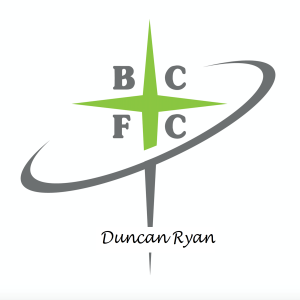
Banchory Christian Fellowship Church
Religion & Spirituality:Christianity

This podcast covers both of the sessions that Duncan delivered on the night of Wednesday 22 Jan 2020.
We have removed the gap after about 29 minutes when Duncan allowed time for group discussions. There is only a 12 second period of silence before Duncan starts his second session.
Here is a copy of Duncan's handout:
Training for Godliness:
2. Reading the Bible (Part 2)
Jan-Feb 2020
A. Written to them, for us
“For whatever was written in former days was written for our instruction, that through endurance and through the encouragement of the Scriptures we might have hope.” Romans 15:4 ESV
We need to take the original route, not the direct one:
• What questions was the author trying to answer?
(These are more important than the questions I want answered!)
• Find out what it meant to them back then, before applying it to us now.
B. Context is King
ALL Scripture is God-breathed, not just the warm and cosy verses.
Beware the ‘Instagram Bible’ – “It comforts but rarely convicts. It emotes but rarely exhorts. It warms but rarely warns. It promises but rarely prompts. It moves but does not mortify. It builds self-assurance but balks at self-examination.” (Jen Wilkin, The Gospel Coalition).
e.g. 1 Corinthians 2:9 – Can we comprehend our salvation?
C. Genre
(Genre: “a style or category of art, music or literature”)
We instinctively learn to read different types of literature in different ways:
• Limerick v’s news report
• Comic v’s textbook
• Novel v’s autobiography
The Bible’s 66 books contain different genres of literature:
• Historical narrative
• Poetry
• Prophecy
• Law
• Wisdom literature
• Apocalyptic writings
• Gospels
• Epistles (Letters)
Commit to reading LITERARILY (according to literary style) before reading literally.
D. Literary Context
• Why is this here?
• What comes immediately before and after this?
• How does this fit into the whole?
o Look for author’s purpose statements (e.g. Luke 1:1-4; 1 John 5:13)
o How does this passage contribute to the bigger aim of the book?
[Also, historical context; redemptive context]
E. In your group:
Example 1
“I can do all things through him who strengthens me” Philippians 4:13 ESV
How have you heard this verse taught/applied? What sort of ‘things’ have we heard this verse be used to refer to?
Take time to consider the immediate context (i.e. what comes before and after) by reading Philippians 4:10-20. Why does Paul write this section? What is Paul’s situation (cp. 1:12-14). How does Paul want to reassure his readers?
In light of this, what does Paul mean by v13?
ii. Example 2
Read John 2:1-11. Where have you heard this passage preached? Taken on its own, what might the author’s purpose be for recording this?
Now read John 20:30-31. Why did John write his Gospel? How does John 2:1-11 contribute to that overall purpose? In light of this, what is John 2:1-11 about?
F. Reading the Bible – what to do
a. Bible in a Year
b. Reading a Part of the Bible
c. Meditating on the Scriptures (Psalm 1:2)
d. Reading with others
e. Apply!
You may as well quit reading and hearing the Word of God, and give it to the devil, if you do not desire to live according to it. Martin Luther
Homework.
Read the story of David and Goliath (1 Samuel 17).
Think about the sort of lessons you have heard taught from this – especially the application (therefore you should…)
Now read 1 Samuel 17:46-47
• What is the purpose behind this story?
• Read through the whole chapter and note the ways that the author accomplishes his purpose in how he unfolds the story. What are we supposed to take from it?
More Episodes
 2024-11-03
2024-11-03
 8
8
 2024-09-29
2024-09-29
 28
28
 2024-09-20
2024-09-20
 20
20
 2024-09-11
2024-09-11
 18
18
 2024-08-04
2024-08-04
 22
22
 2024-07-14
2024-07-14
 17
17
 2024-07-08
2024-07-08
 21
21
 2024-07-08
2024-07-08
 11
11
Create your
podcast in
minutes
- Full-featured podcast site
- Unlimited storage and bandwidth
- Comprehensive podcast stats
- Distribute to Apple Podcasts, Spotify, and more
- Make money with your podcast
It is Free
- Privacy Policy
- Cookie Policy
- Terms of Use
- Consent Preferences
- Copyright © 2015-2024 Podbean.com





